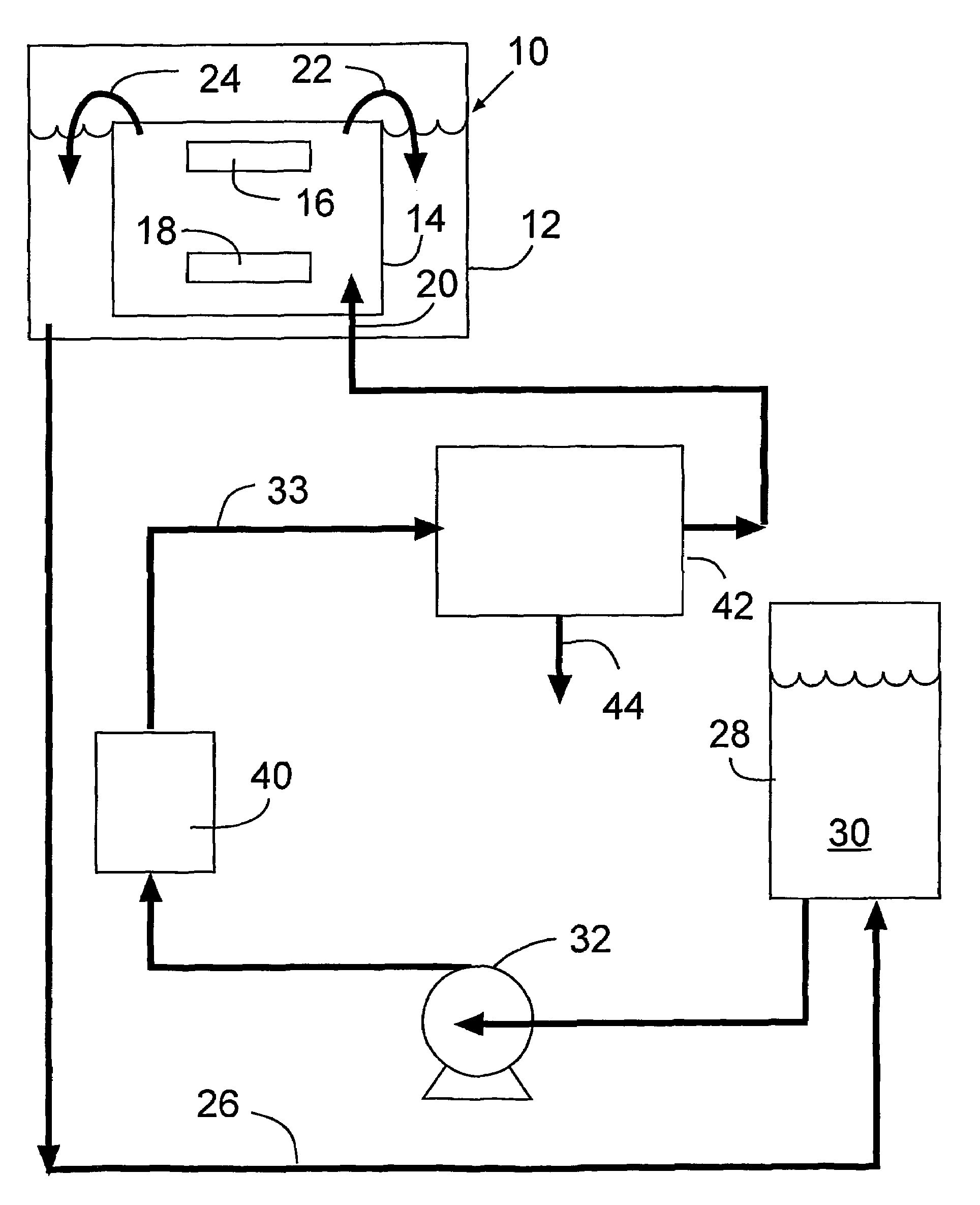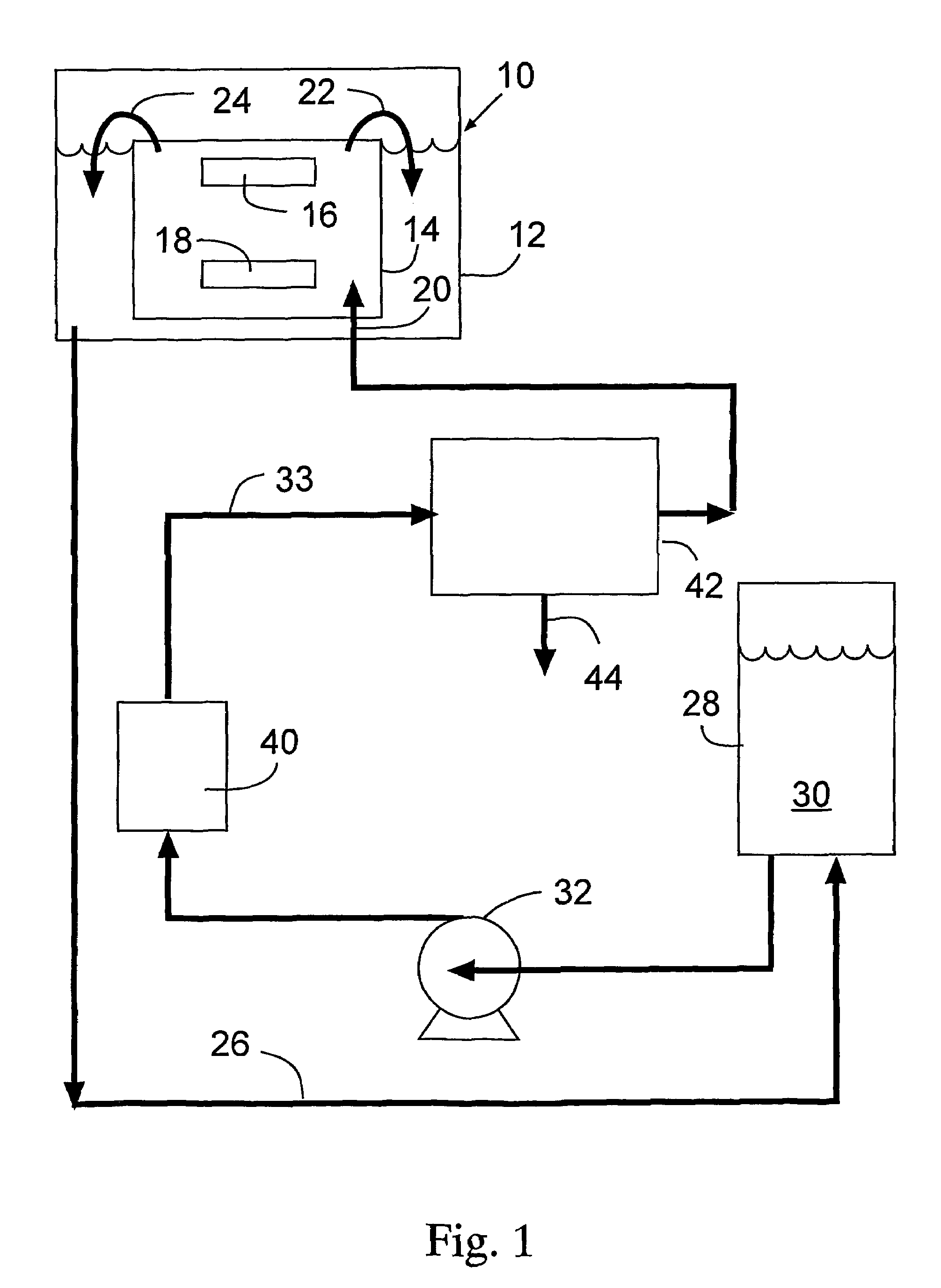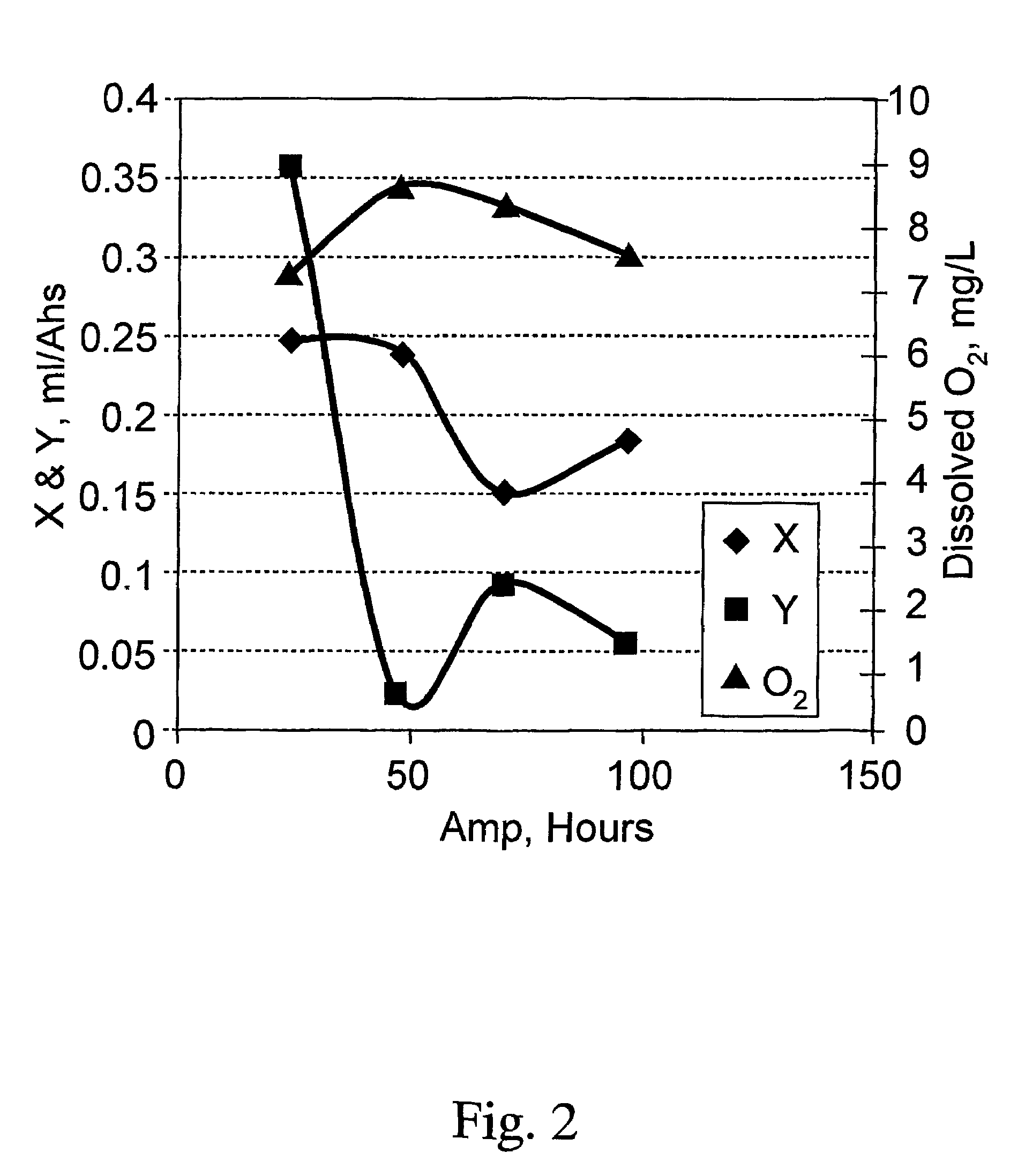Process for degassing an aqueous plating solution
a technology of aqueous plating solution and degassing process, which is applied in the direction of liquid degasification, separation process, and membrane, can solve the problems of reducing the electrical conductivity of the copper pathway formed on the semiconductor surface, adversely affecting the acceptability of the deposited copper film, etc., to facilitate the plating of copper and prevent the intrusion of liquid through the pores of the membran
- Summary
- Abstract
- Description
- Claims
- Application Information
AI Technical Summary
Benefits of technology
Problems solved by technology
Method used
Image
Examples
example 1
Experiments Without Degasser
[0029]Experiments were performed in a copper electroplating tool. The plating solution from a reservoir (˜75 liters) is circulated (˜17 liters / min flow rate) through a plating cell containing a silicon wafer cathode and a copper anode. The solution additives are maintained at adequate level by periodically analyzing the bath for composition and adding the make up amount.
[0030]An analysis of two key additive components and dissolved oxygen in the solution, for one week, is profiled in FIG. 2 wherein X and Y are two different organic additives. FIG. 2 plots Amp. Hours vs. additive concentration or oxygen concentration. As shown in FIG. 2, the X and Y additives were consumed in the presence of oxygen.
example 2
Use of Single Degasser
[0031]A second set of experiments were conducted as described in Example 1 but with a degasser unit turned on (˜26 Hg vacuum). The degasser unit included 10 inch hollow fiber skinned PFA ultrafiltration membranes. The dissolved oxygen and additive concentration in the bath were monitored as profiled in FIG. 3.
[0032]As shown in FIG. 3, the process with a degasser lowers the dissolved oxygen in the solution by about 1 ppm. The concentration of component X in the additive is less affected (consumed) with the degasser or without the degasser. These results are shown in FIG. 4. The data show that with the degasser on, the consumption of the additive component X was less.
example 3
Three Degassers and Nitrogen Blanket
[0033]Three degasser modules of the type used in Example 2 were installed (in a parallel configuration) in the copper plating unit. The objective was to determine incremental improvements in degassing efficiency and its effect on the additive consumption, over time.
[0034]The system performance was also improved by reducing / eliminating the sources of oxygen entrainment into the plating solution at the cell overflow, drain pipe return line, and the solution reservoir by infusing nitrogen and covering these areas with appropriate plastic lids or plastic sheeting.
[0035]Preliminary results indicate the degassing efficiency increased to about 40% with three degasser (vs 10–15% with one degasser). Upon adding / covering various exposed areas with a nitrogen blanket, there was a significant improvement in the degassing efficiency in ˜50%. The bath samples were analyzed for additive consumption. The results show a dramatic decline in the additive consumption...
PUM
| Property | Measurement | Unit |
|---|---|---|
| surface energy | aaaaa | aaaaa |
| surface energy | aaaaa | aaaaa |
| length | aaaaa | aaaaa |
Abstract
Description
Claims
Application Information
 Login to View More
Login to View More - R&D
- Intellectual Property
- Life Sciences
- Materials
- Tech Scout
- Unparalleled Data Quality
- Higher Quality Content
- 60% Fewer Hallucinations
Browse by: Latest US Patents, China's latest patents, Technical Efficacy Thesaurus, Application Domain, Technology Topic, Popular Technical Reports.
© 2025 PatSnap. All rights reserved.Legal|Privacy policy|Modern Slavery Act Transparency Statement|Sitemap|About US| Contact US: help@patsnap.com



